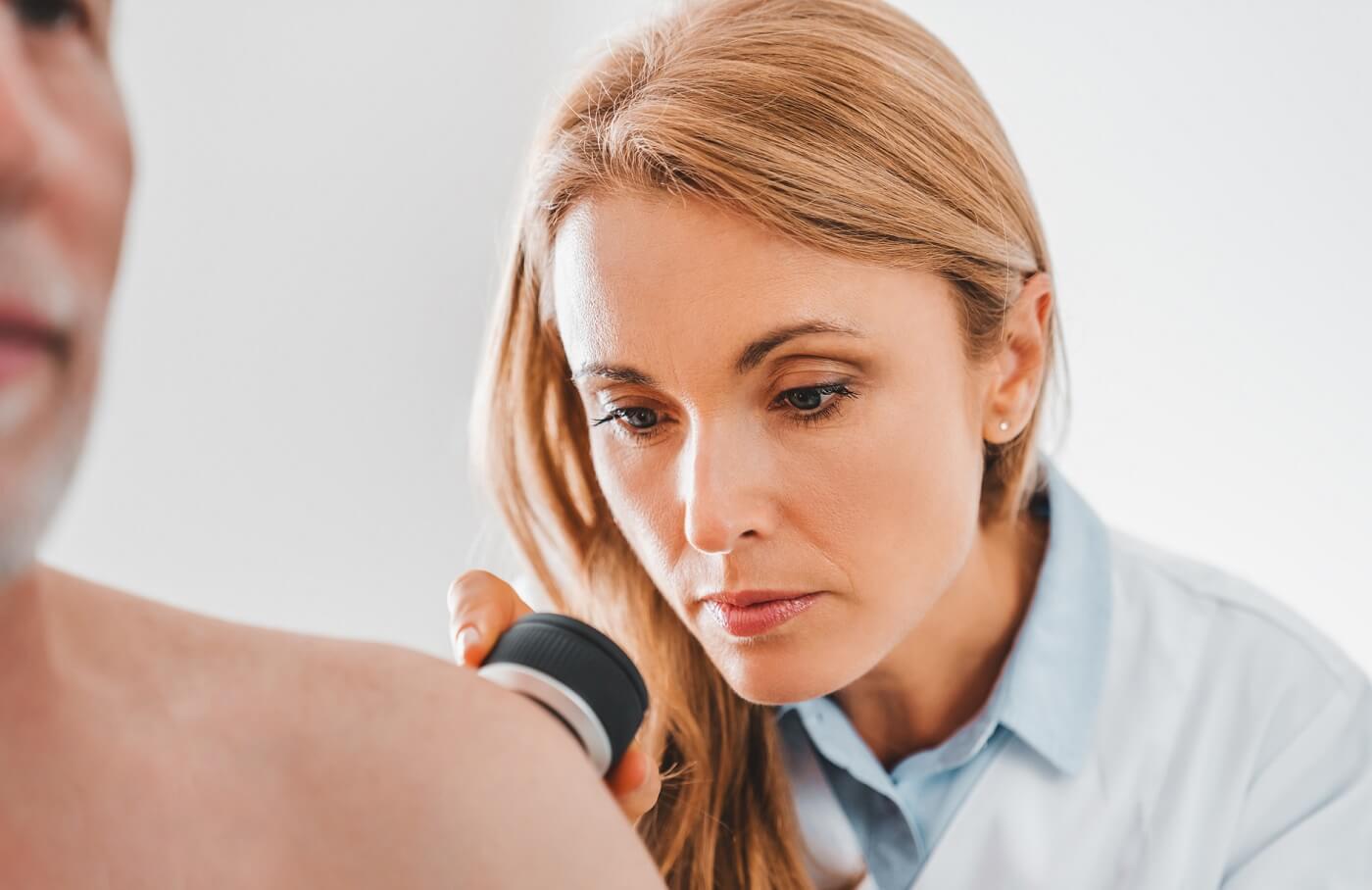Skin cancer is highly treatable if it is caught and treated early. You know your body best, so you are the best one to look for and notice changes. The Skin Cancer Foundation recommends you examine your skin from head-to-toe every month. Skin cancers appear in many shapes and sizes, and you are the best person to determine if something on your body is new, changing or unusual. Self-exams are a powerful way to look at yourself with the focus of saving your own life.

Reducing your risk of skin cancer begins with getting to know your body, including all the birthmarks and moles you already have. It’s important to know the normal look and feel of these marks so you know when something has changed.
Make sure you have plenty of light and use a hand-held or full-length mirror. Things to look for include:
- A new mole (that looks different from your other moles)
- A new red or darker color flaky patch that may be a little raised
- A change in the size, shape, color or feel of a mole or birthmark
- A sore that doesn’t heal
Check Yourself
- Look at your face, neck, ears and scalp. You may want to use a comb or a blow dryer to move your hair so you can see better. Sometimes your hairdresser or barber can help too.
- Look at the front and back of your body in the mirror. Raise your arms and look at your sides.
- Bend your elbows. Look carefully at your fingernails, palms, forearms (including the undersides) and upper arms.
- Examine the back, front and sides of your legs.
- Sit and take a close look at your feet, including your toenails, your soles and the spaces between your toes.
By checking your skin regularly, you’ll learn what is normal for you. It may be helpful to record the dates of your skin exams and write notes about the way your skin looks. If you find anything unusual, see your doctor.
